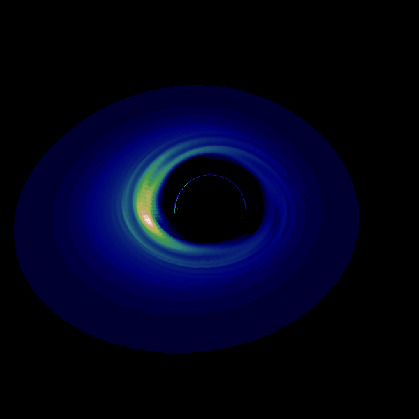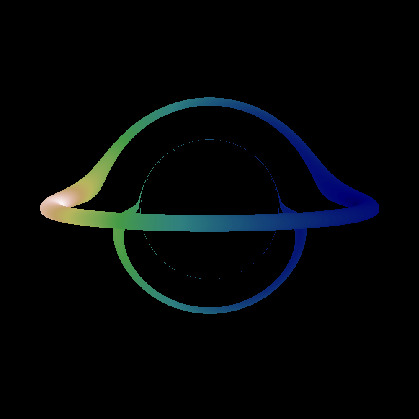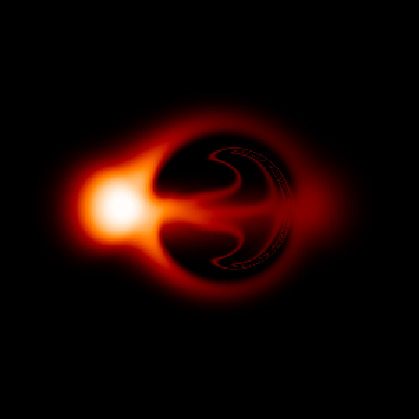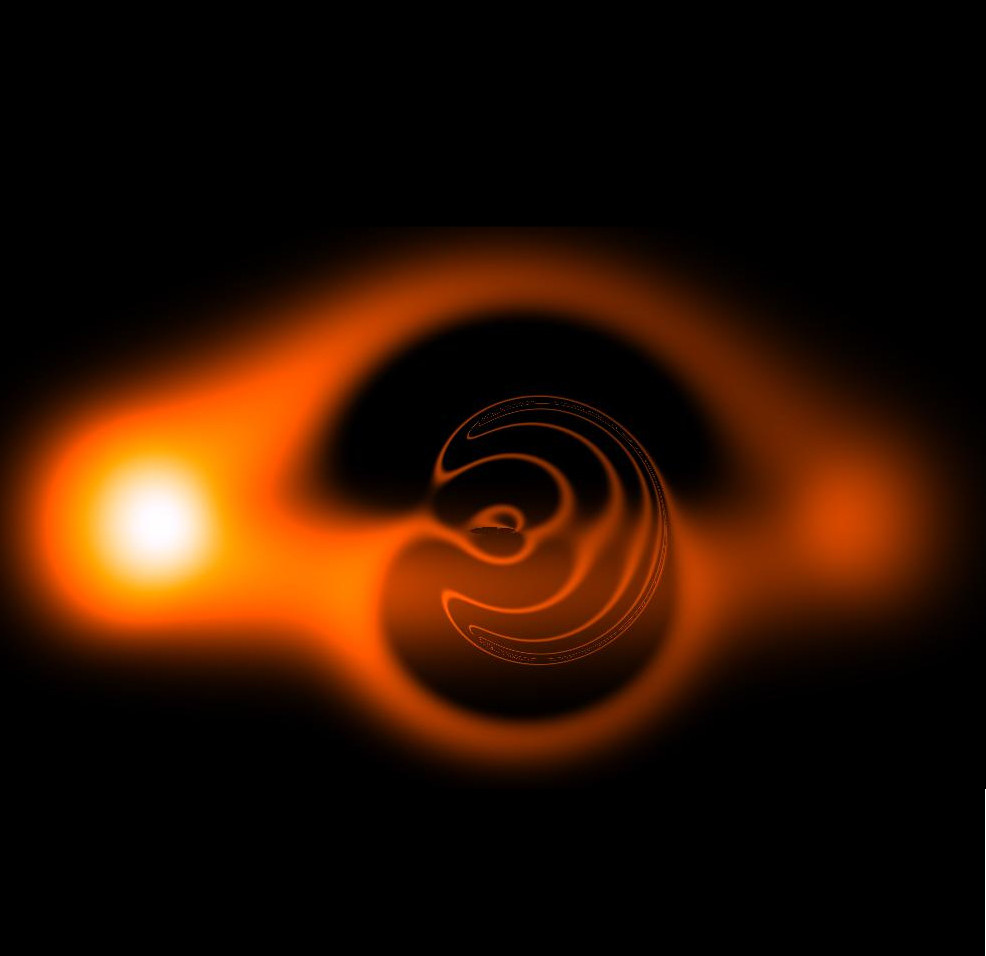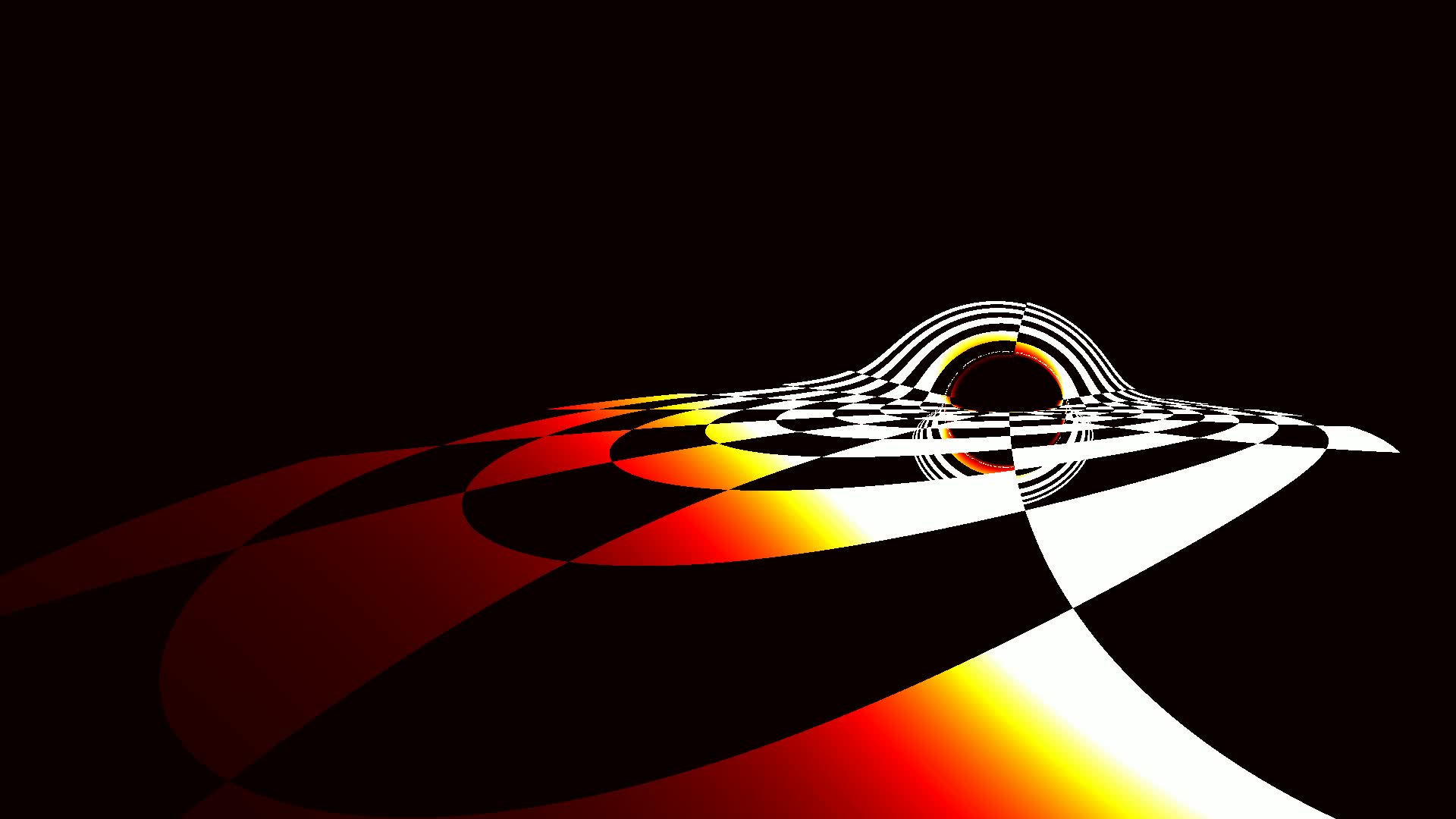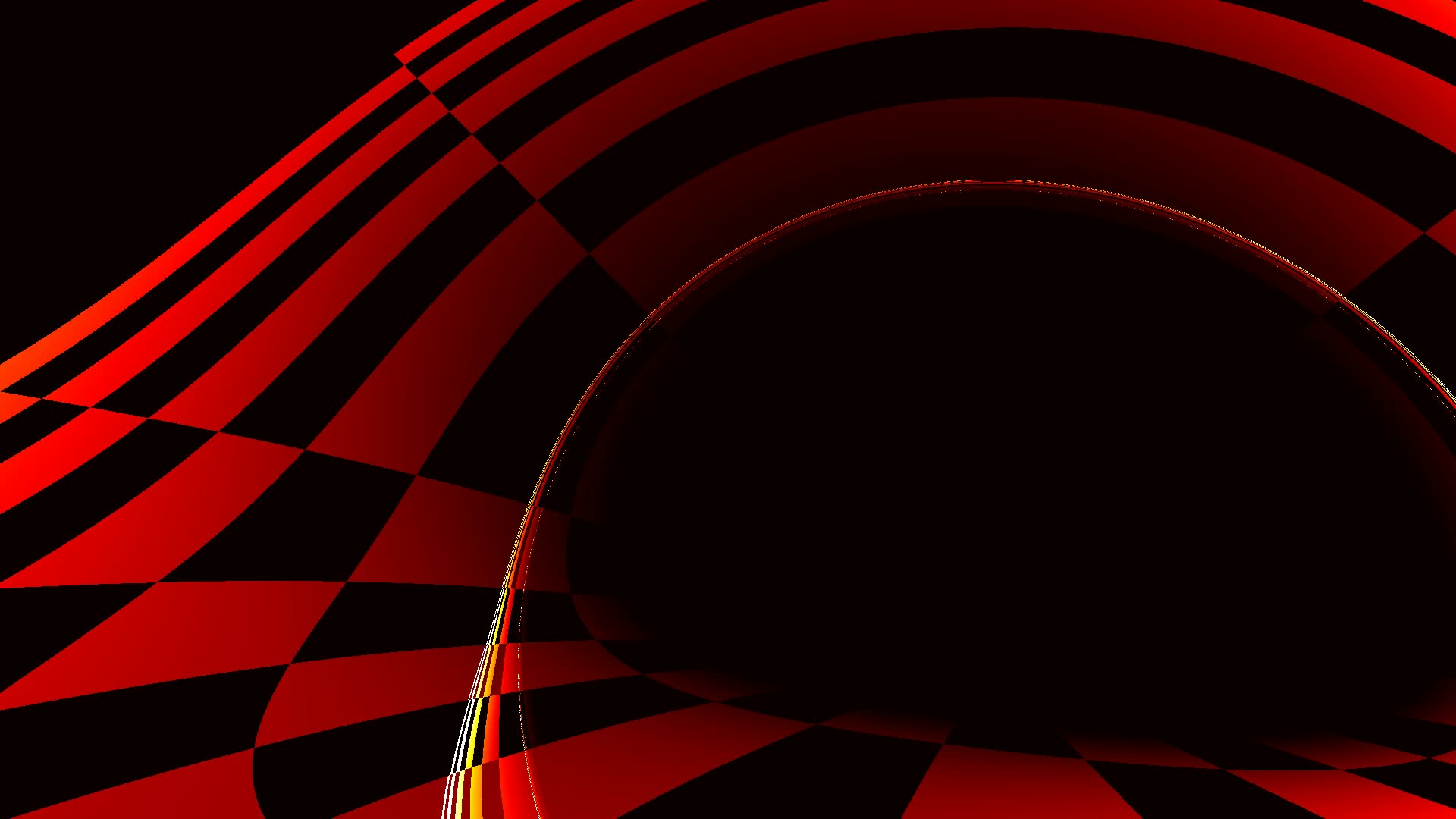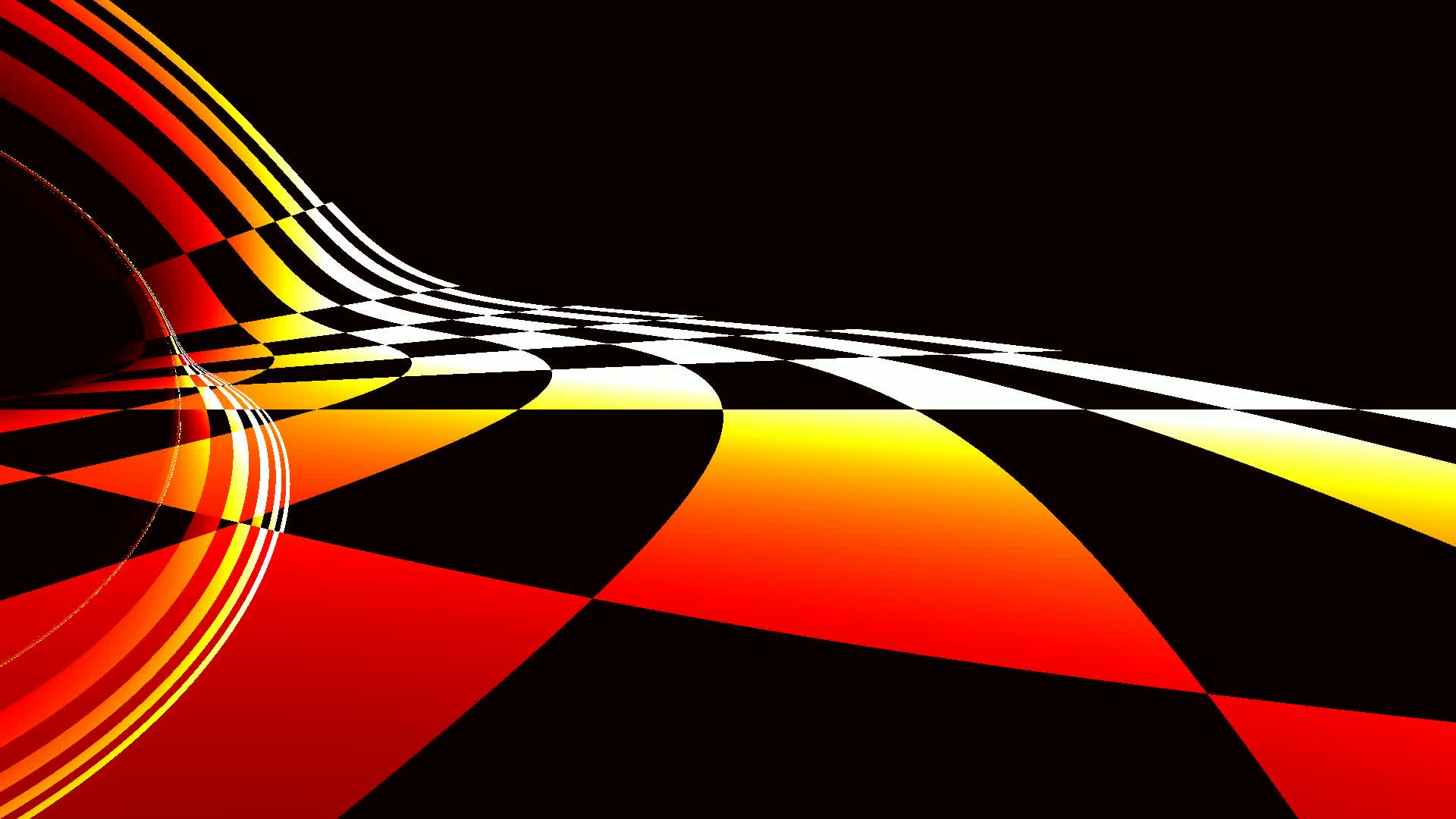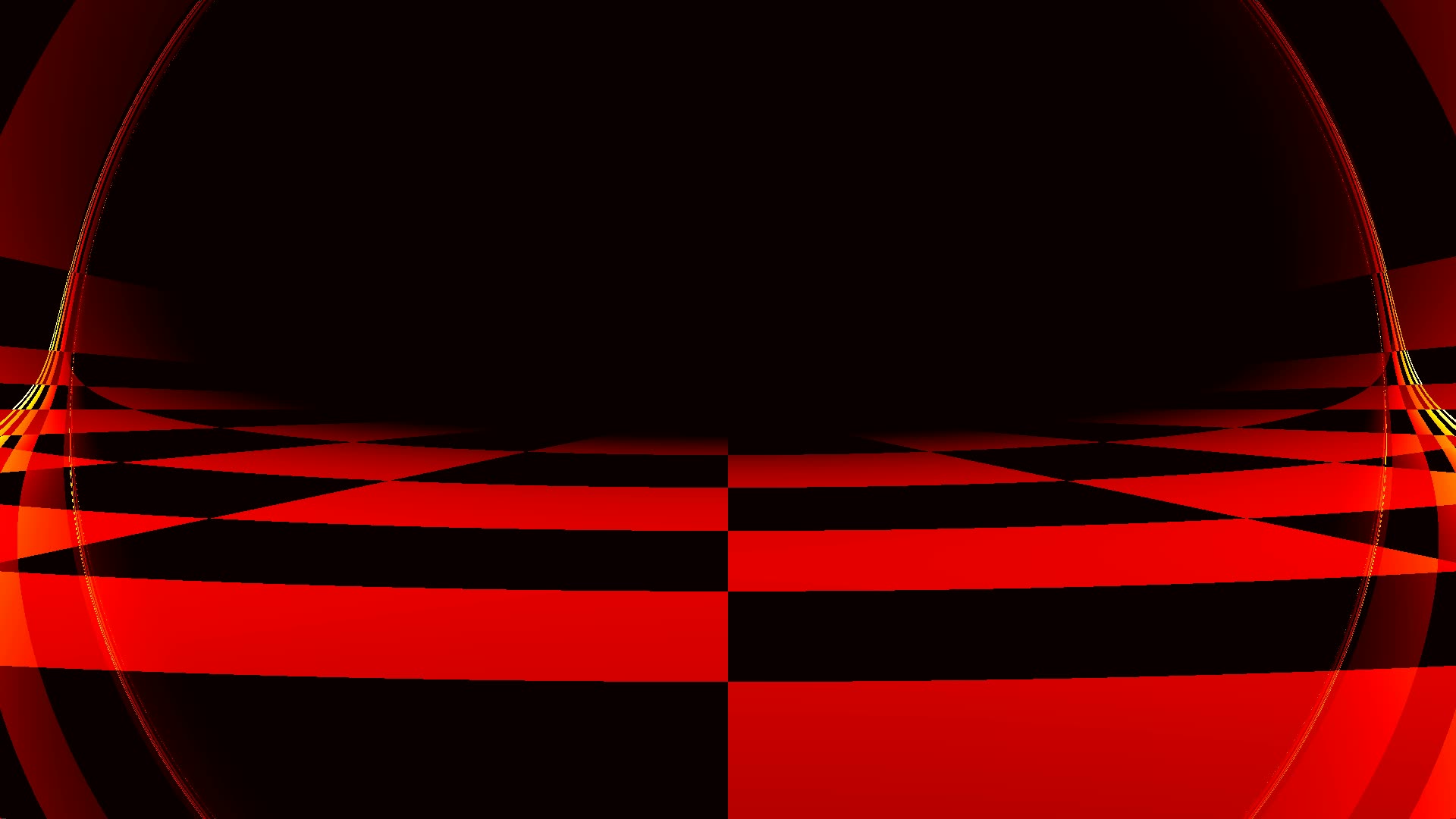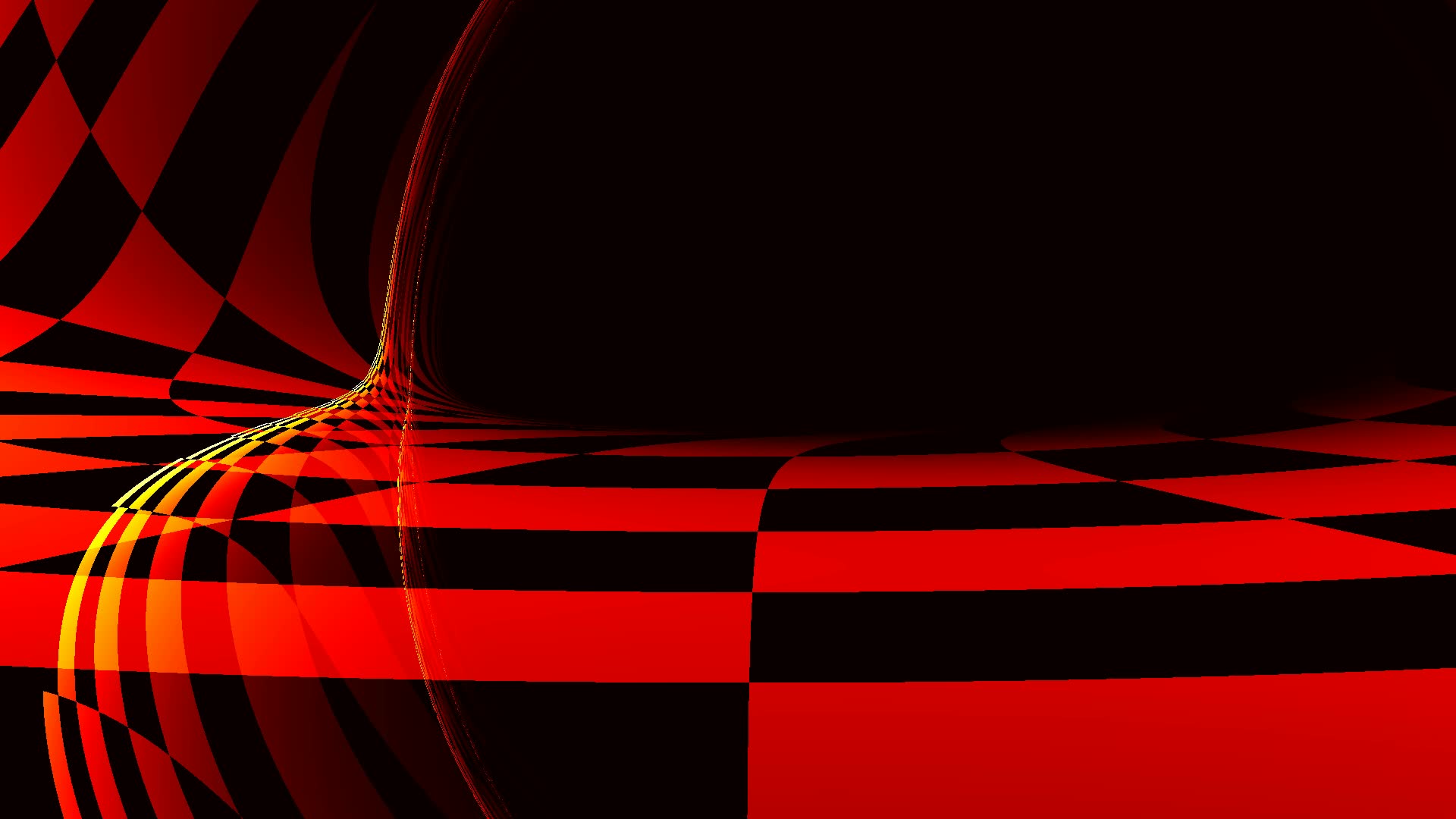Details
1. Fluctuating disk
Image of an accretion disk surrounding a non-rotating black hole, seen under an inclination angle of 45°. The disk is subject to fluctuations due to magnetic turbulence. For more detail see this paper, Fig. 2.
2. Rossby-wave disk
Image of an accretion disk surrounding a non-rotating black hole, seen under an inclination angle of 45°. The disk is subject to an instability called Rossby-Wave instability. For more detail see this paper, Fig. 1.
3. Slender torus
Image of an oscillating slender torus surrounding a non-rotating black hole, seen under an inclination angle of 85°. For more detail see this paper, Fig. 1.
4. Thick torus around a black hole at Sgr A*
Image at a wavelength of 1.3 mm of a thick torus surrounding Sgr A* described as a rotating black hole (mass M=4.3 millions solar mass, spin a=0.9M), emitting thermal synchrotron radiation, seen under an inclination angle of 85°. For more detail see this paper, Fig. 1 (top-left panel).
5. Thick torus around a boson star at Sgr A*
Same setup as image 4., except that the torus surrounds a rotating boson star with the same spin parameter. A boson star is an assembly of spin-0 bosons (like the Higgs boson) that behaves like a macroscopic quantum body. It has no hard surface, no event horizon, no central singularity. For more detail see this paper, Fig. 5 (middle-right panel).
6. Thick torus around a naked wormhole at Sgr A*
Same setup as image 4., except that the torus surrounds a naked rotating wormhole with the same spin parameter. This spacetime has no event horizon, no central singularity, and connects two asymptotically flat regions connected by the (traversable) wormhole throat. For more detail see this paper, Fig. 5 (middle-right panel).
7. Aberration effects at 0.9 c (movie)
The object is a non-rotating thin disk bearing a chessboard
pattern, around a Schwarzschild black-hole. The disk extends
from r=0 to r=28 in geometrical units, is not rotating and
jν(ν) is constant. The observer sits 5° above
the outer edge of the disk. At each frame of
this movie, the
velocity of the observer increases in the orthoradial direction,
from 0 to 99% of the speed of light. The camera is directed at
45° between the direction of the black-hole and the direction of
the observer's velocity vector. The image is one frame of the
movie, when the observer moves at about 90% of the speed of
light. At this velocity, light aberration pulls the image of
everything (including the black hole) in front of the moving
observer. This movie can be re-created with gyoto mk-video
--func=accelerating_tangential_screen --output=file.avi
....
8. Camera orbiting the black hole, looking down (movie)
The object is the same as peviously. The camera follows a
geodesic in an inclined, eccentric orbit. The camera is always
pointed in the direction of the black hole (i.e. in the
direction of decreasing
r). This movie
takes into account the effects due to the velocity of the
observer (including aberration, beaming etc.) and the frame rate
is constant in proper time, not in coordinate time. This movie
can be re-created with gyoto mk-video
--func=orbiting_screen --output=file.avi ....
9. Camera orbiting the black hole, looking forward (movie)
The object is the same as peviously. The camera follows a geodesic skimming the disk in an eccentric orbit. The camera is always pointed in the direction of motion. The field-of-view is 90° in the horizontal direction. This movie can be re-created in Python 3 with
from gyoto import core, std, metric, util, animate
import numpy
ks=metric.Generic('KerrKS')
sc=animate.defaultScenery()
sc.metric(ks)
scr=sc.screen()
scr.observerKind('FullySpecified')
traj=std.Star()
traj.metric(ks)
coord=numpy.asarray([0, 20, 0, 4., 1., 0, 0.16965088, 0.]); t1=406.7094
coord[4:]*=ks.SysPrimeToTdot(coord[:4], coord[5:])
traj.initCoord(coord)
func=animate.orbiting_screen_forward(trajectory=traj, t1=t1, roll=-90)
animate.mk_video(output="forward_ks_skimming_fullhd.avi",
width=1920, height=1080, fps=25, scenery=sc, func=func,
fov=90)
10. Growing black hole (movie)
The object is the same as peviously. The camera is 5° above the
outer edge of the disk. In
this movie, the mass
of the black-hole is initially negligible (the initial outer
radius is actually several thousand) and grows until it's
horizon is just about to swallow the observer. This movie
can be re-created with gyoto mk-video
--func=growing_mass --output=file.avi ....
11. Growing Kerr black hole (movie)
Same as above except the black hole is spinning at a=0.95. This movie can be re-created in Python 3 with:
import gyoto.animate
sc=gyoto.animate.defaultScenery()
sc.metric().set('Spin', 0.95)
gyoto.animate.mk_video(output='growing_mass_spin095_fullhd.avi',
func='growing_mass', scenery=sc,
width=1920, height=1080, fps=25, nthreads=16, scenery=sc)

